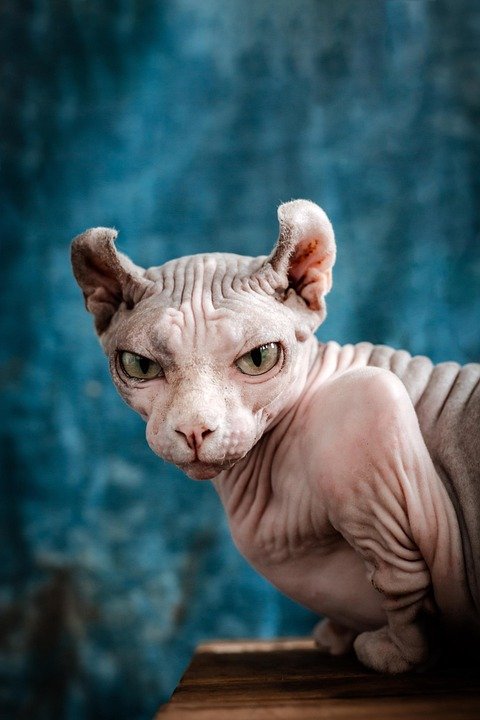
“`html
Introduction
Hairless cats, often seen as exotic and unique, have specific grooming needs that differ from their furry counterparts. Breeds like the Sphynx, Donskoy, and Peterbald, though devoid of a typical fur coat, still require diligent grooming routines to maintain their skin health and overall well-being. Contrary to what some might believe, the absence of fur does not equate to low maintenance. This article will delve into the essential tips for mastering hairless cat grooming, ensuring your feline friend remains healthy and happy.
Understanding Hairless Cats
Before diving into grooming techniques, it’s crucial to understand the nature of hairless cats. Their lack of fur doesn’t mean they are completely hairless; many possess a fine down that feels like suede. This unique trait means they cannot absorb natural oils as efficiently as other cats, leading to potential skin issues if not properly tended to.
Unique Skin Characteristics
Hairless cats have more active sebaceous glands, which secrete oils to protect and moisturize their skin. Without fur to distribute these oils, they can accumulate on the skin, leading to a greasy feel or even skin infections if not regularly cleaned.
Temperature Sensitivity
Another important aspect of hairless cats is their sensitivity to temperature changes. Without a fur coat, they can get cold easily, and they are also susceptible to sunburn. Owners must ensure their environment is appropriately adjusted to meet these needs.
Essential Grooming Tips
Regular grooming is an integral part of caring for a hairless cat. Here are some essential tips to ensure your cat’s skin remains healthy and clean:
1. Regular Bathing
Hairless cats require regular baths to remove the build-up of oils on their skin. Depending on the individual cat, this could be as frequent as once a week. Use a gentle, moisturizing cat shampoo to avoid drying out their skin. Ensure the water is lukewarm, as these cats are sensitive to temperature extremes.
2. Moisturizing the Skin
After a bath, it is beneficial to apply a pet-safe moisturizer to keep the skin from drying out. Look for products specifically formulated for cats, as human moisturizers can contain ingredients harmful to them.
3. Ear Cleaning
Without fur to protect their ears, hairless cats can accumulate a significant amount of wax and debris. Regular cleaning with a vet-recommended ear cleaner is essential to prevent infections. Use a cotton ball or soft cloth to gently clean around the ear canal, being careful not to insert anything into the ear.
4. Nail Trimming
Hairless cats do not have fur to help file down their nails naturally. Regular trimming is necessary to prevent overgrowth and potential injury. Use a cat nail clipper and be careful to avoid the quick, the sensitive area within the nail.
5. Eye Care
Some hairless breeds are prone to eye discharge. Regularly wiping their eyes with a damp, soft cloth can help prevent buildup and infection.
Environmental Considerations
The environment plays a significant role in the comfort and health of a hairless cat. Here are some considerations:
1. Temperature Control
Ensure your home is kept at a comfortable temperature. Consider providing warm blankets or clothes designed for cats to help them regulate their body temperature. In the warmer months, be mindful of sun exposure and provide shaded areas to prevent sunburn.
2. Nutrition
A balanced diet is crucial for maintaining healthy skin in hairless cats. High-quality cat food that supports skin health can help manage oil production and overall well-being. Consult with your vet to determine the best diet for your cat’s specific needs.
Common Skin Issues and Solutions
Despite diligent care, hairless cats can still encounter skin problems. Being aware of these issues and knowing how to address them is vital.
1. Acne
Hairless cats are prone to acne, particularly around the chin. Regular cleaning with a mild, pet-safe cleanser can help manage this condition. In severe cases, consult a veterinarian for medicated treatments.
2. Skin Infections
Oily build-up can lead to bacterial or yeast infections. If you notice redness, inflammation, or an unusual odor, it’s essential to seek veterinary advice for appropriate treatment.
3. Allergies
Allergies can manifest as skin irritations in hairless cats. Identifying and eliminating allergens, whether they are food-related or environmental, is crucial. Your vet may recommend allergy testing or a special diet to determine the cause.
Building a Routine
Creating a consistent grooming routine is key to maintaining a hairless cat’s health. Start incorporating grooming activities gradually, making them a positive experience with treats and praise. This routine will not only help keep your cat clean and healthy but also strengthen the bond between you and your pet.
1. Weekly Schedule
– **Bathing**: Once a week
– **Ear Cleaning**: Once a week
– **Nail Trimming**: Every two weeks
– **Eye Cleaning**: As needed, typically a few times a week
2. Incorporating Play and Rest
While grooming is essential, also ensure your cat has ample playtime and rest. Engaging in interactive play can help with their physical fitness and mental stimulation, while a cozy, warm spot for rest supports their need for comfort.
Conclusion
Mastering hairless cat grooming involves understanding their unique needs and implementing a comprehensive care routine. With regular bathing, moisturizing, ear and eye care, and environmental adjustments, you can ensure your hairless cat leads a healthy, comfortable life. Remember, grooming is not just about hygiene; it’s also an opportunity to bond with your feline companion, making it a rewarding experience for both you and your cat.
By taking these essential grooming tips into account, you can confidently manage the unique needs of your hairless cat, ensuring a happy and healthy life for your unique and cherished pet.
“`






